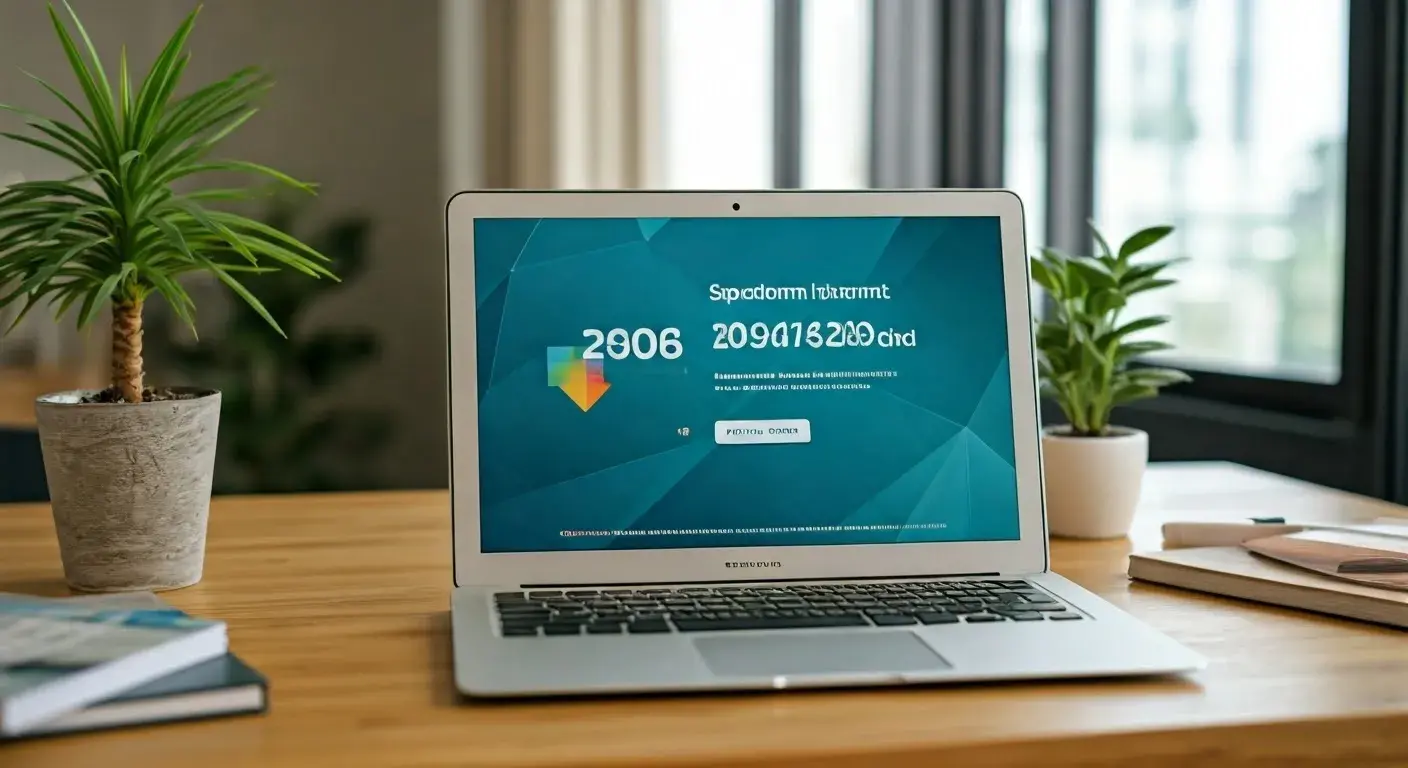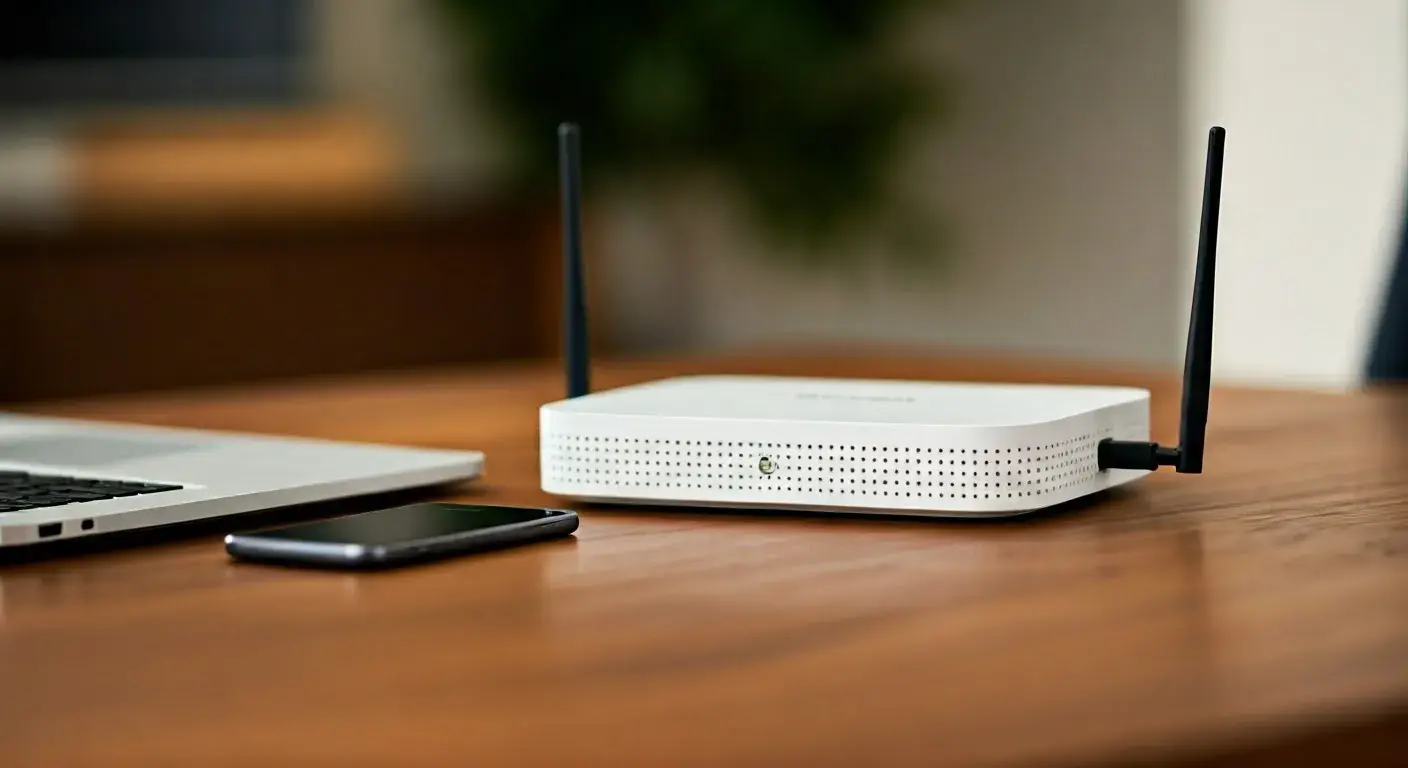Affordable Spectrum Internet for Low-Income

Discover how to access affordable Spectrum internet plans tailored for low-income households in 2025. This guide details eligibility, application processes, and tips for securing essential broadband connectivity, ensuring you don't miss out on crucial online resources and opportunities.
The Digital Divide in 2025: Why Affordable Internet Matters More Than Ever
In 2025, the internet is no longer a luxury; it's a fundamental necessity. From education and employment to healthcare and civic engagement, virtually every aspect of modern life is intertwined with reliable online access. However, a significant portion of the population still faces the challenge of the digital divide – the gap between those who have access to modern information and communication technology and those who do not. For low-income households, this divide can create substantial barriers, limiting opportunities and perpetuating cycles of disadvantage. The Pew Research Center's latest data from late 2024 indicates that while broadband adoption has increased across all income levels, a persistent gap remains, particularly in rural areas and among lower-income demographics. Approximately 15% of households earning less than $30,000 annually still lack home broadband, a statistic that underscores the urgent need for accessible and affordable internet solutions.
The consequences of this digital exclusion are far-reaching. Students without reliable internet struggle to complete homework, participate in online learning, and access educational resources, putting them at a significant disadvantage compared to their peers. Job seekers are hampered in their ability to search for openings, submit applications, and participate in virtual interviews. Accessing telehealth services, managing finances online, and even staying informed about community events become more challenging, impacting overall well-being and social inclusion. As the world increasingly moves online, ensuring that everyone, regardless of income, can participate fully is not just an economic imperative but a social justice issue. This is where initiatives from major internet service providers, like Spectrum, become critically important.
Understanding Spectrum's Commitment to Accessibility
Charter Communications, operating under the brand name Spectrum, recognizes the vital role of internet connectivity in today's society. As one of the largest broadband providers in the United States, Spectrum has made a conscious effort to bridge the digital divide through various programs and initiatives designed to make internet service more accessible to underserved communities and low-income families. This commitment goes beyond simply offering basic internet packages; it involves understanding the specific needs of these demographics and providing solutions that are both affordable and reliable.
Corporate Social Responsibility in the Digital Age
In 2025, corporate social responsibility (CSR) is increasingly being evaluated by a company's tangible impact on societal challenges. For telecommunications companies, this means actively working to ensure digital equity. Spectrum's approach to accessibility is rooted in this understanding. They aim to provide not just the infrastructure but also the affordability and digital literacy resources necessary for individuals and families to thrive in an increasingly connected world. This includes partnerships with community organizations, offering discounted services, and supporting digital education programs.
Spectrum's Broader Initiatives
Beyond specific low-income programs, Spectrum is invested in expanding its network infrastructure, particularly in rural and unserved areas, through significant capital investments. They also participate in government programs aimed at broadband deployment and affordability. These broader efforts contribute to a more equitable digital landscape overall, but the targeted programs are often the most direct route for individuals seeking immediate relief. The company's public statements and sustainability reports for 2024-2025 consistently highlight digital equity as a key pillar of their community engagement strategy, emphasizing their dedication to providing essential services to those who need them most.
Spectrum Internet Assist (SIA): Your Pathway to Affordable Broadband
The cornerstone of Spectrum's commitment to affordable internet for low-income households is their program known as Spectrum Internet Assist (SIA). This program is specifically designed to provide qualifying households with high-speed internet at a significantly reduced price. In 2025, SIA continues to be a vital resource, offering a lifeline to families who might otherwise be priced out of essential broadband services. The program aims to deliver a reliable internet connection that is sufficient for everyday online activities, including remote learning, job searching, accessing government services, and staying connected with family and friends.
SIA typically offers download speeds of up to 300 Mbps, which is more than adequate for most households. This speed allows for smooth streaming of educational videos, participation in video calls for remote work or school, and the downloading of necessary files. Crucially, the program also includes free access to Wi-Fi hotspots in public areas, further extending connectivity options. This is a significant benefit, especially for those who may not have a stable internet connection at home or need to supplement their home service. The monthly cost for SIA is substantially lower than standard Spectrum internet plans, making it a truly affordable option. As of early 2025, the typical monthly rate for SIA is around $19.99, though this can vary slightly by region and may be subject to change.
Key Features of Spectrum Internet Assist
- Speed: Up to 300 Mbps download speeds, suitable for multiple users and devices.
- Data Caps: Typically offers unlimited data, removing concerns about exceeding usage limits.
- Equipment: Includes a modem at no additional charge.
- Wi-Fi Hotspots: Free access to Spectrum's extensive network of public Wi-Fi hotspots.
- Contract: Often available with no annual contract, providing flexibility.
- Price: A significantly discounted monthly rate, making it accessible for low-income households.
The value proposition of SIA is clear: it provides a robust internet connection that meets the demands of modern digital life at a price point that is manageable for families facing financial constraints. It's designed to be a comprehensive solution, addressing not just the speed and data needs but also the cost barrier that often prevents low-income individuals from getting online.
Eligibility Requirements for Spectrum Internet Assist
To ensure that Spectrum Internet Assist (SIA) reaches those who need it most, Spectrum has established specific eligibility criteria. These requirements are generally tied to participation in federal assistance programs, which serve as a standardized way to identify households with demonstrated financial need. Understanding these requirements is the first crucial step in determining if you qualify for this affordable internet service.
Primary Eligibility Criteria
The most common way to qualify for Spectrum Internet Assist is by being enrolled in one of the following federal assistance programs. Proof of participation in one of these programs is typically required during the application process:
- The National School Lunch Program (NSLP): This program provides free or reduced-price lunches to eligible students. If your child participates in NSLP, your household likely qualifies for SIA.
- The Supplemental Nutrition Assistance Program (SNAP): Formerly known as food stamps, SNAP provides nutritional assistance to low-income individuals and families.
- The Supplemental Security Income (SSI) program: SSI provides monthly payments to adults and children with a disability or blindness who have income and resources below the financial limits.
- Medicaid: This is a federal and state program that helps with medical costs for some people with limited income and resources.
- Housing Assistance: This can include programs like Section 8 Housing Choice Vouchers or public housing assistance.
- Federal Public Housing Assistance (FPHA): This includes programs administered by the Department of Housing and Urban Development (HUD).
- Tribal Programs: Spectrum also recognizes eligibility through specific tribal assistance programs, reflecting a commitment to serving diverse communities.
Important Considerations
It's important to note that eligibility is typically determined on a household basis. This means that if anyone within your household is enrolled in one of the qualifying programs, the entire household may be eligible for SIA. Spectrum's website and customer service representatives are the best resources for the most up-to-date and region-specific eligibility requirements. They can guide you through the process and help you understand what documentation you will need. As of 2025, Spectrum is also working to integrate with national digital equity initiatives, which may expand eligibility criteria or offer additional benefits in the future.
Some regions might have additional local programs that also qualify for SIA. Always check with Spectrum directly for the most accurate and comprehensive list of qualifying assistance programs in your specific service area. For example, if you receive TANF (Temporary Assistance for Needy Families) benefits, it's worth inquiring if that program is accepted for SIA eligibility in your location.
How to Apply for Spectrum Internet Assist: A Step-by-Step Guide
Once you've confirmed your eligibility for Spectrum Internet Assist (SIA), the next step is to complete the application process. Spectrum has streamlined this process to make it as straightforward as possible for applicants. Following these steps carefully will help ensure a smooth transition to affordable, high-speed internet.
Step 1: Verify Service Availability
Before you begin the application, it's essential to confirm that Spectrum services are available at your address. You can do this by visiting the Spectrum website and entering your zip code or full address in their service availability checker. If Spectrum is available, you can proceed to the next step.
Step 2: Gather Required Documentation
As mentioned in the eligibility section, you will need proof that you are enrolled in a qualifying federal assistance program. This typically includes:
- A copy of your enrollment letter or participation card for programs like NSLP, SNAP, SSI, Medicaid, or housing assistance.
- Your account number or participant ID associated with the assistance program.
It's advisable to have digital copies (scans or clear photos) of these documents ready, as you may need to upload them during the online application process. If applying by phone or in person, have the physical documents available.
Step 3: Submit Your Application
There are typically two primary ways to apply for Spectrum Internet Assist:
- Online: Visit the Spectrum website and navigate to the Spectrum Internet Assist section. You will find an online application form where you can enter your details and upload your supporting documents. This is often the quickest method.
- By Phone: You can call Spectrum's customer service line directly. They have dedicated representatives who can assist you with the SIA application over the phone. The number can usually be found on their website.
During the application, you will be asked for personal information such as your name, address, and contact details, along with information about your qualifying assistance program.
Step 4: Application Review and Approval
Spectrum will review your application and documentation to verify your eligibility. This process can take a few business days. You will be notified of the decision via email or phone.
Step 5: Installation and Service Activation
Once approved, you will schedule an installation appointment. A Spectrum technician will come to your home to set up the internet service and provide you with the modem. If you are a self-starter, you might be able to opt for self-installation, which can sometimes be quicker and may incur fewer fees. Upon activation, you'll be connected to affordable, high-speed internet!
Remember to keep copies of all submitted documents and any confirmation numbers or correspondence from Spectrum for your records. If you encounter any issues during the application process, don't hesitate to reach out to Spectrum customer support for assistance.
Comparing Spectrum Internet Assist with Other Low-Income Programs
While Spectrum Internet Assist (SIA) is a prominent option, it's beneficial to understand how it stacks up against other low-income internet programs, including government-funded initiatives. This comparison helps ensure you are choosing the best available option for your household's needs and budget in 2025.
Spectrum Internet Assist vs. The Affordable Connectivity Program (ACP)
The Affordable Connectivity Program (ACP) is a federal initiative providing a discount of up to $30 per month (or $75 per month for households on Tribal lands) towards broadband service and connected devices for eligible low-income households. Many internet providers, including Spectrum, participate in the ACP. This means you can potentially combine the ACP benefit with Spectrum's standard plans or even use it to further reduce the cost of SIA, making internet access even more affordable. In 2025, it's crucial to check the current status and funding of the ACP, as legislative changes can impact its availability. If the ACP is fully funded and operational, combining it with SIA could potentially lead to free or extremely low-cost internet service, depending on the standard plan costs and the ACP discount.
SIA vs. Other ISP Low-Income Programs
Other major internet service providers also offer their own low-income programs. For instance, AT&T has its Access program, and Comcast offers Internet Essentials. These programs often have similar eligibility requirements, typically tied to participation in federal assistance programs. However, the speeds, pricing, and specific features can vary.
| Feature | Spectrum Internet Assist (SIA) | Example Competitor Program (e.g., Internet Essentials) | Affordable Connectivity Program (ACP) |
|---|---|---|---|
| Typical Speed | Up to 300 Mbps | Up to 50 Mbps (may vary) | Varies by ISP, discount applies |
| Monthly Cost (Est.) | ~$19.99 | ~$29.95 (may vary) | Up to $30 discount ($75 on Tribal lands) |
| Eligibility | Federal assistance programs (NSLP, SNAP, etc.) | Federal assistance programs, income thresholds | Federal assistance programs, income thresholds |
| Equipment Included | Free modem | Modem rental fee may apply | Discount may apply to equipment |
| Contract | No annual contract typically | May vary | N/A (discount applied by ISP) |
When comparing, consider not just the price but also the speed and data allowances. SIA's 300 Mbps speed is often significantly faster than entry-level plans from competitors, making it a strong contender for households needing to support multiple devices and demanding online activities. The ACP, if available and funded, offers the most flexibility as it can be applied to various plans from different providers, potentially allowing you to get higher speeds or better service than you might otherwise afford.
In 2025, the landscape of affordable internet is dynamic. It's crucial to research current offerings from all providers in your area and investigate any available government subsidies. Always verify the most up-to-date information directly with the providers and relevant government agencies.
Maximizing Your Affordable Internet Experience
Once you have secured an affordable internet plan like Spectrum Internet Assist (SIA), the next step is to make the most of it. Simply having a connection isn't enough; optimizing its use can significantly enhance your online experience and ensure you're getting the full value of your service.
Optimize Your Home Network
Even with a good speed plan, a poorly configured home network can lead to slow performance. Ensure your modem and router (if you have a separate one) are placed in a central location, away from obstructions and potential interference. If you're using Spectrum's provided modem/router combo, consider its placement. For larger homes or areas with weak Wi-Fi signals, explore options like Wi-Fi extenders or mesh network systems, though these come at an additional cost. Regularly restarting your modem and router can also resolve minor connectivity issues and improve performance.
Utilize Free Wi-Fi Hotspots
SIA includes free access to Spectrum's public Wi-Fi hotspots. Take advantage of these when you're out and about. They can be useful for downloading large files, attending a virtual meeting if you're away from home, or simply saving your mobile data. Many public libraries, community centers, and fast-food restaurants also offer free Wi-Fi, which can be a valuable resource.
Digital Literacy and Online Safety
Having internet access is only part of the equation; knowing how to use it safely and effectively is equally important. Many community organizations and libraries offer free digital literacy training programs. These can cover essential skills like using email, navigating websites, understanding online security, and identifying scams. In 2025, with the rise of sophisticated online threats, prioritizing digital safety is paramount. Use strong, unique passwords, be cautious about sharing personal information, and keep your devices' software updated.
Explore Additional Resources
Beyond internet service, many organizations offer low-cost or free devices (computers, tablets) to eligible households. Research programs like the National Digital Inclusion Alliance (NDIA) or local initiatives in your community. Access to a device is crucial to fully leverage your internet connection. Furthermore, look into free online courses and educational resources that can help you upskill or learn new things. Platforms like Coursera, edX, Khan Academy, and even YouTube offer a wealth of knowledge accessible with your broadband connection.
By taking these steps, you can ensure that your affordable internet service not only meets your basic needs but also opens up a world of opportunities for learning, growth, and connection.
Troubleshooting Common Issues with Affordable Internet Plans
Even with reliable providers like Spectrum, users of any internet plan, including affordable ones like SIA, might encounter occasional issues. Knowing how to troubleshoot common problems can save you time and frustration, and potentially avoid unnecessary service calls.
Slow Internet Speeds
If your internet seems slower than expected:
- Restart Your Equipment: Unplug your modem and router (if separate) for 30 seconds, then plug them back in. This often resolves temporary glitches.
- Check Connected Devices: Too many devices actively using the internet simultaneously can slow things down. Try disconnecting some devices.
- Run a Speed Test: Use a reliable speed test website (like Speedtest.net or Fast.com) to check your current download and upload speeds. Compare these results to the speeds advertised for your SIA plan (up to 300 Mbps). If speeds are consistently much lower, contact Spectrum.
- Check for Interference: Other electronic devices (microwaves, cordless phones) or physical obstructions can weaken Wi-Fi signals.
- Wired vs. Wireless: Test your speed using an Ethernet cable directly connected to the modem/router. If speeds are significantly better when wired, the issue might be with your Wi-Fi signal.
Intermittent Connectivity (Dropping Connection)
If your internet connection drops frequently:
- Check Cables: Ensure all coaxial and Ethernet cables are securely connected to your modem and wall outlets. Loose connections are a common culprit.
- Check for Outages: Visit Spectrum's website or use their app to see if there are any reported service outages in your area.
- Overheating Equipment: Ensure your modem and router have adequate ventilation. Overheating can cause performance issues and disconnections.
- Router Issues: If you use your own router, it might be outdated or malfunctioning. Try connecting directly to the Spectrum modem to test.
Inability to Connect to Wi-Fi
If your devices can't find or connect to your Wi-Fi network:
- Verify Wi-Fi is Enabled: Ensure Wi-Fi is turned on on your device.
- Check Router Lights: Look at the indicator lights on your Spectrum modem/router. Consult the user manual or Spectrum's support site to understand what the lights mean.
- Correct Network and Password: Double-check that you are connecting to the correct Wi-Fi network name (SSID) and entering the password accurately. Passwords are case-sensitive.
- Device Issues: Try connecting another device to the Wi-Fi. If other devices connect successfully, the problem may be with the specific device you're trying to use.
When in doubt, Spectrum's customer support is available to assist. Have your account information ready, and be prepared to describe the issue clearly. They can often diagnose problems remotely and guide you through further troubleshooting steps or schedule a technician visit if necessary.
The Future of Affordable Internet Access
The landscape of affordable internet access is continually evolving, driven by technological advancements, government policy, and increasing societal recognition of the internet as an essential utility. In 2025 and beyond, several key trends are shaping the future of how low-income households access broadband.
Increased Government Investment and Policy Support
Programs like the ACP, despite potential funding uncertainties, highlight a growing commitment from the federal government to ensure digital equity. We can expect continued efforts to expand broadband infrastructure into underserved areas and to provide subsidies that make service affordable. Legislation and funding allocations in the coming years will likely focus on sustainability and long-term solutions for digital inclusion. Initiatives aimed at lowering the cost of broadband deployment and encouraging competition among providers could also play a significant role.
Technological Advancements
Emerging technologies like 5G home internet and satellite broadband (e.g., Starlink) offer new possibilities for connectivity, particularly in areas where traditional cable or fiber deployment is challenging or expensive. While these technologies have their own cost structures and limitations, they could provide alternative options for affordable access in the future. As these technologies mature, their costs may decrease, making them more accessible to low-income households.
Focus on Digital Skills and Device Access
The conversation around affordable internet is broadening beyond just the service cost. There is a growing understanding that access to affordable devices and the digital literacy skills to use them effectively are equally crucial components of digital inclusion. Future initiatives are likely to integrate these elements more holistically, providing comprehensive support packages that include internet service, low-cost devices, and digital skills training.
Provider Innovation
Internet service providers like Spectrum will continue to innovate and adapt their offerings to meet the needs of diverse customer segments. This may include more flexible plan structures, bundled services, and enhanced support for low-income customers. The competitive pressure to serve all market segments, coupled with regulatory encouragement, will likely lead to more robust and accessible affordable internet options.
The trajectory is clear: affordable and accessible internet is becoming an increasingly recognized right, not a privilege. While challenges remain, the concerted efforts from government, providers, and community organizations are paving the way for a more digitally inclusive future where the benefits of the internet are available to everyone, regardless of their economic circumstances.
Conclusion
In 2025, securing affordable Spectrum internet is more achievable than ever for low-income households, thanks to programs like Spectrum Internet Assist (SIA). The digital divide remains a significant challenge, but SIA offers a tangible solution by providing high-speed internet at a substantially reduced cost, typically around $19.99 per month, with speeds up to 300 Mbps. Eligibility is primarily determined by participation in federal assistance programs such as the National School Lunch Program, SNAP, Medicaid, or housing assistance, making the qualification process accessible for many.
The application process, whether completed online or via phone, is designed to be straightforward, requiring proof of enrollment in a qualifying program. By following the step-by-step guide provided, eligible households can successfully apply for and receive this essential service. It is also crucial to explore how SIA can be combined with other initiatives, such as the Affordable Connectivity Program (ACP), to potentially further reduce costs or even achieve free internet service, depending on current funding and program rules.
Maximizing your affordable internet experience involves optimizing your home network, utilizing free public Wi-Fi hotspots, prioritizing digital literacy and online safety, and exploring resources for low-cost devices. Furthermore, understanding how to troubleshoot common issues like slow speeds or intermittent connectivity can ensure a consistently positive online experience. The future of affordable internet access looks promising, with ongoing government support, technological advancements, and a continued focus on holistic digital inclusion that encompasses service, devices, and skills.
We strongly encourage eligible readers to investigate Spectrum Internet Assist and other available low-income internet programs in their area. Reliable internet access is fundamental for education, employment, healthcare, and civic participation in our modern world. Taking the steps outlined in this guide can help bridge the digital divide for your household, unlocking a world of opportunities and ensuring you remain connected and informed.





